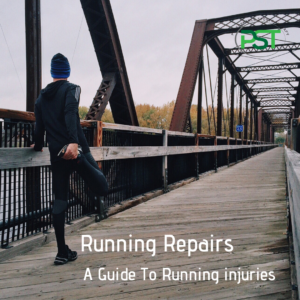The time I didn’t take my own advice
4 years ago I hurt my hip/back. I was mucking about with some pretty aggressive mobility drills and over did it.
At first I didn’t think it was too bad.
Within an hour I couldn’t sit down comfortably.
It got worse as the day went on. By the following day I was sitting down on my right bum cheek and slowly lowering my left onto the seat.
It took me 8 weeks to get back to lifting in the gym to return to normal.
But it took 8 months before I was running well again.
All because I didn’t follow my own advice.
There’s a big leap going from being in pain to pain free.
A big one from pain free to regaining strength and movement.
And a bigger one from regaining strength to restoring the resiliency needed for running.
It’s NOT about doing more work but doing the right work.
It’s not about a whole bunch of different exercises but about progressing the correct ones. I stopped my progressions too early in my rehab and paid the price.
I should have been back running pain free in 3 months once I started running again not 6. On top of not completing the rehab I rushed the return to running part too.
It’s very embarrassing.
I was out for a nice easy 30 minute run and got to the halfway point when I noticed my hip. A couple of minutes later it wasn’t a “feeling” it was pain.
Shooting pain right through my left glute.
Fan-*********-tastic I thought to myself. I tried walking for a bit then running again but it was still sore. A little less so but sore none the less.
The problem was twofold.
- I hadn’t followed the rehab right through to the end
- I had returned to continuous running too soon.
This meant I had missed out on the very important last phase. Creating resilience.
It’s here that we bulletproof ourselves. Where the activities are demanding and ensure that we know that once complete we are good to go.
The upside of this is a return to running program I created off the back of my own, painful, experience. You can get it here if you would like it
The moral of the story is…
Just because you are pain free does not mean that you are “good to go”. 9/10 this is definitely not the case.
It doesn’t make any difference if it is your hip like me or your knee. You need to go through the full process to ensure that you are as robust as can be.



